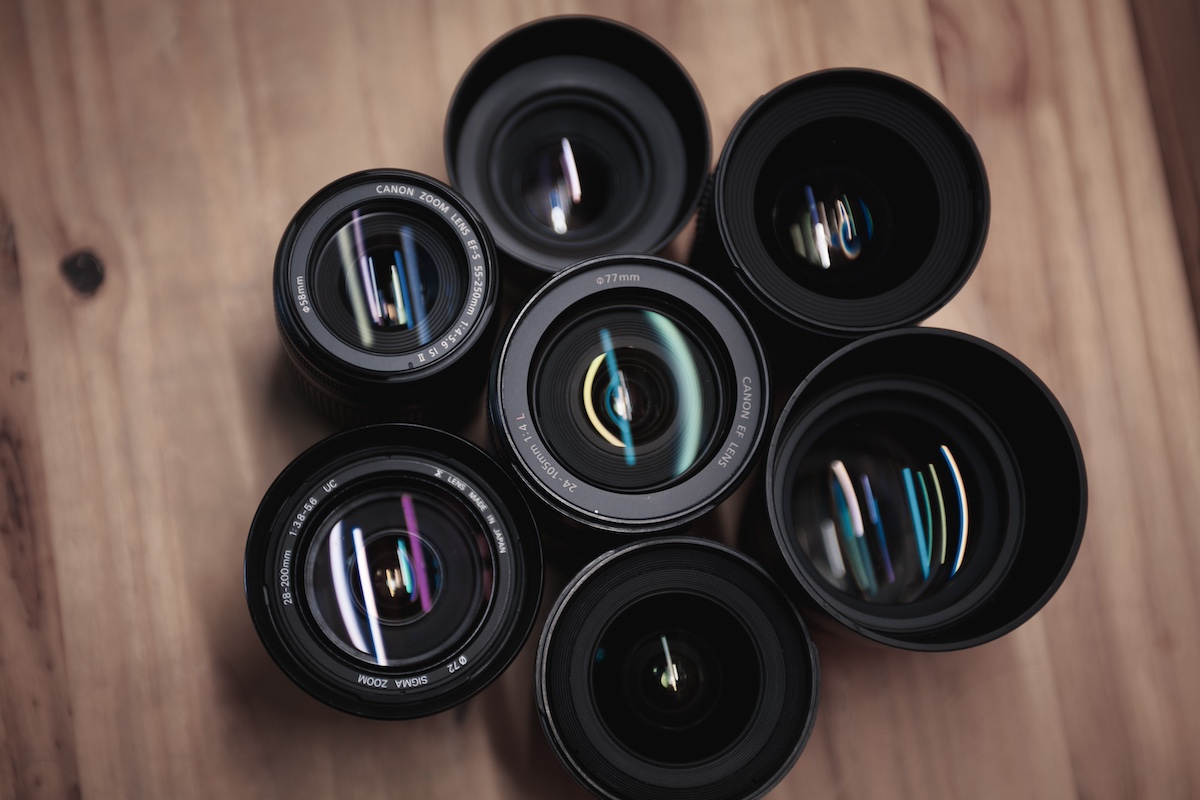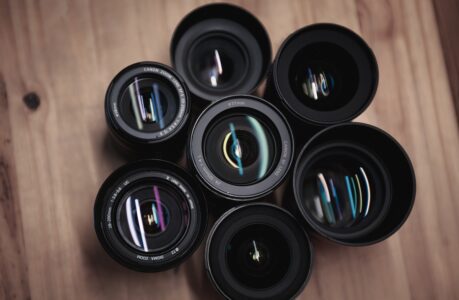Astrophotography is a captivating hobby that allows enthusiasts to capture the wonders of the universe through the lens of a camera. To achieve stunning celestial images, selecting the right lens is crucial. In this comprehensive guide, we will delve into the world of astrophotography and explore the various types of lenses that are ideal for capturing the cosmos. Whether you are a novice stargazer or a seasoned astrophotographer, understanding the characteristics of different lenses can significantly enhance your ability to capture breathtaking astronomical phenomena.
Understanding the Basics of Astrophotography
Before delving into the intricacies of lenses for astrophotography, it is essential to have a fundamental understanding of the discipline itself. Astrophotography is the art and science of capturing images of celestial objects such as stars, planets, galaxies, and nebulae. It combines astronomy and photography, requiring specialized equipment and techniques to capture the faint light emitted by distant objects in the night sky.
The primary goal of astrophotography is to reveal the beauty and mysteries of the universe, often invisible to the naked eye, through long-exposure photography. To achieve this, astrophotographers use various types of cameras, telescopes, and, of course, lenses. The choice of lens is a critical factor that can significantly impact the quality and versatility of astrophotographic images.

Prime vs. Zoom Lenses for Astrophotography: Which is Better?
When it comes to selecting a lens for astrophotography, one of the first decisions to make is whether to opt for a prime or a zoom lens. Each type has its advantages and disadvantages, and the choice depends on your specific astrophotographic goals.
Prime Lenses: A Fixed Focal Length Advantage
Prime lenses have a fixed focal length, which means they cannot zoom in or out. These lenses are known for their exceptional image quality, sharpness, and wide apertures, making them a popular choice for astrophotography. The wide aperture of prime lenses allows more light to enter the camera sensor, making them ideal for capturing faint celestial objects.
One of the most significant advantages of prime lenses is their ability to produce crisp, high-contrast images with minimal optical aberrations, such as chromatic aberration and distortion. This is particularly important when capturing detailed shots of the moon, planets, or distant galaxies.
Zoom Lenses: Versatility and Convenience
On the other hand, zoom lenses offer versatility by allowing you to change the focal length, zooming in and out to frame your shot. They are a more flexible option for capturing a variety of celestial objects, from wide-angle shots of the Milky Way to close-ups of planets and the moon.
Zoom lenses can be convenient for astrophotographers who want to capture different perspectives without changing lenses frequently. However, they typically have smaller maximum apertures compared to prime lenses, which can limit their ability to gather sufficient light for faint deep-sky objects.

The Crucial Role of Aperture in Astrophotography
Aperture plays a pivotal role in astrophotography, affecting both the brightness of the image and the depth of field. The aperture of a lens is represented by its f-number or f-stop, such as f/2.8, f/4, or f/5.6. Understanding how aperture impacts astrophotography is essential in choosing the right lens.
Wide Apertures for Capturing Faint Objects
Lenses with wide apertures, represented by lower f-numbers (e.g., f/2.8 or f/1.4), are highly desirable for astrophotography. A wide aperture allows more light to enter the camera sensor during each exposure, making it easier to capture faint celestial objects such as distant galaxies and nebulae.
Wide-aperture lenses also enable shorter exposure times, reducing the chances of star trailing—a phenomenon where stars appear as streaks due to the Earth’s rotation during long exposures. This is particularly advantageous when photographing celestial objects with apparent motion.
Narrow Apertures for Increased Depth of Field
In some cases, astrophotographers may prefer to use lenses with narrower apertures (higher f-numbers) to achieve a greater depth of field. Narrow apertures increase the zone of sharp focus in the image, allowing both near and distant objects to be in focus simultaneously.
For example, when capturing a landscape with a foreground element, such as a telescope or a silhouetted tree, astrophotographers may opt for a narrower aperture to ensure that both the foreground and the stars in the background are sharp and detailed.
The Importance of Focal Length in Astrophotography
Focal length is another critical factor to consider when choosing a lens for astrophotography. The focal length determines the field of view and magnification of the lens, which can significantly impact the types of celestial objects you can capture effectively.
Wide-Angle Lenses: Capturing the Night Sky
Wide-angle lenses have shorter focal lengths, typically ranging from 10mm to 35mm. These lenses offer a broad field of view, making them ideal for capturing expansive portions of the night sky, including the Milky Way, constellations, and meteor showers.
Astrophotographers often use wide-angle lenses to create stunning landscapes with the night sky as a backdrop. The wide field of view allows you to include both terrestrial and celestial elements in your compositions, resulting in visually striking images.
Standard and Telephoto Lenses: Zooming in on Celestial Objects
Standard and telephoto lenses have longer focal lengths, typically ranging from 50mm to 400mm or more. These lenses excel at capturing specific celestial objects in greater detail. For example, a standard 50mm lens is suitable for photographing the moon, while a telephoto lens can provide a close-up view of planets, galaxies, and nebulae.
Telephoto lenses are particularly useful for capturing intricate details on the lunar surface or highlighting the intricate features of planets like Jupiter and Saturn. They also enable astrophotographers to photograph distant galaxies and nebulae with greater clarity.

Choosing the Right Lens for Different Astrophotographic Subjects
The ideal lens for astrophotography can vary depending on the celestial subjects you wish to capture. Here, we will explore specific lens recommendations for various types of astrophotography, from wide-field Milky Way shots to close-ups of planets and deep-sky objects.
1. Wide-Field Astrophotography
Wide-field astrophotography aims to capture large portions of the night sky, often emphasizing the beauty of the Milky Way, constellations, and celestial landscapes. To excel in this genre, consider the following lens options:
Recommended Lenses:
- Ultra-Wide Angle Prime Lenses: Lenses with focal lengths around 14mm to 24mm and wide apertures (e.g., f/2.8) are excellent choices for wide-field astrophotography. Popular options include the Canon EF 14mm f/2.8L II USM and the Nikon AF-S NIKKOR 14-24mm f/2.8G ED.
- Wide-Angle Zoom Lenses: Zoom lenses with focal lengths between 10mm and 35mm and wide apertures (e.g., f/2.8) offer versatility for capturing the night sky. The Tamron 15-30mm f/2.8 Di VC USD and the Sigma 14-24mm f/2.8 DG HSM Art are excellent choices.
These lenses allow you to create breathtaking compositions of the Milky Way arching across the night sky, accentuated by terrestrial elements like mountains or forests. Their wide apertures gather ample light, making them suitable for astrophotographers seeking vivid, starry landscapes.
2. Lunar and Planetary Astrophotography
Photographing the moon and planets requires different considerations due to their relatively bright and compact nature. Achieving crisp details on these celestial objects demands specific lens attributes:
Recommended Lenses:
- Telephoto Prime Lenses: Lenses with focal lengths in the range of 200mm to 400mm are ideal for lunar and planetary astrophotography. The Canon EF 200mm f/2.8L II USM and the Nikon AF-S NIKKOR 300mm f/4E PF ED VR are excellent choices.
- Telephoto Zoom Lenses: Zoom lenses with focal lengths around 100mm to 300mm are also suitable for capturing the moon and planets. Consider lenses like the Sigma 150-600mm f/5-6.3 DG OS HSM Sports or the Tamron SP 150-600mm f/5-6.3 Di VC USD G2.
These lenses provide the necessary magnification to capture the moon’s craters, mountains, and lunar features, as well as details on the surfaces of planets like Jupiter and Mars. A sturdy tripod and a remote shutter release are essential accessories for achieving sharp images when using telephoto lenses.
3. Deep-Sky Astrophotography
Deep-sky astrophotography involves capturing distant galaxies, nebulae, and star clusters, often requiring long exposures to reveal faint details. To excel in this challenging genre, specialized equipment is essential:
Recommended Lenses:
- Fast Wide-Angle Prime Lenses: Lenses with wide apertures and focal lengths between 14mm and 24mm can be used for wide-field deep-sky astrophotography. The Rokinon 14mm f/2.8 IF ED UMC and the Samyang 24mm f/1.4 ED AS UMC are popular choices.
- Fast Telephoto Lenses: Telephoto lenses with focal lengths between 100mm and 200mm and wide apertures (e.g., f/2.8) are suitable for capturing individual deep-sky objects or smaller regions of the night sky. The Canon EF 135mm f/2L USM and the Nikon AF-S NIKKOR 180mm f/2.8D IF-ED are excellent options.
- Telescopes: For dedicated deep-sky astrophotography, many enthusiasts opt for telescopes equipped with astrophotography-specific accessories such as focal reducers and field flatteners. Popular choices include the Celestron EdgeHD 800 SCT and the Sky-Watcher Evostar 80ED APO.
Deep-sky astrophotography demands precision in tracking celestial objects and minimizing vibrations. Equatorial mounts with motorized tracking capabilities are indispensable for achieving long-exposure images without star trailing.
Lens Characteristics to Consider
Beyond focal length and aperture, several other lens characteristics should be considered when selecting the ideal lens for astrophotography. These factors can significantly impact the quality of your images:
1. Lens Coatings
Anti-reflective coatings on lens elements are crucial for reducing internal reflections and minimizing lens flare, both of which can degrade the quality of astrophotographic images. Look for lenses with multi-coated or nano-coated optics for improved contrast and clarity.
2. Optical Aberrations
Minimizing optical aberrations such as chromatic aberration and coma is essential for achieving sharp and aberration-free astrophotographs. High-quality prime lenses are often designed to minimize these aberrations.
3. Image Stabilization
Some lenses come equipped with image stabilization (IS) or vibration reduction (VR) technology, which can be advantageous when shooting at longer focal lengths. IS or VR helps counteract camera shake, resulting in sharper images during long exposures.
4. Weight and Portability
Consider the weight and portability of the lens, especially if you plan to take it to remote or dark-sky locations. Lightweight and compact lenses are more convenient for astrophotographers on the move.
5. Filter Compatibility
Check if the lens can accommodate astrophotography filters, such as light pollution filters or narrowband filters. These filters can significantly enhance the quality of your astrophotographs by reducing light pollution and isolating specific wavelengths of light emitted by celestial objects.
Post-Processing and Lens Correction
In the world of astrophotography, post-processing plays a crucial role in enhancing the final image. Even with the best lens, some imperfections and distortions may still be present in the raw image data. Software tools like Adobe Photoshop and specialized astrophotography software can help correct optical aberrations, reduce noise, and enhance overall image quality.
Lenses for Astrophotography
In the realm of astrophotography, choosing the ideal lens is a critical decision that can significantly impact the quality of your images. Whether you’re aiming to capture wide-field views of the Milky Way, detailed shots of the moon and planets, or the intricate beauty of deep-sky objects, there are lenses designed to meet your specific needs.
Remember that the perfect astrophotography lens for one type of celestial subject may not be suitable for another. Factors such as focal length, aperture, and lens characteristics should be carefully considered to achieve the best results. With the right lens in your arsenal and a passion for exploring the cosmos, you can embark on a captivating journey through the universe, capturing its wonders one frame at a time.
Explore further:
Astrophotography enthusiasts can greatly benefit from joining online communities, attending workshops, and continuously honing their skills to capture the beauty of the cosmos with precision and artistry.

